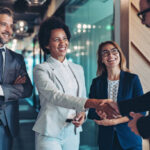How to Prepare for a Cybersecurity Audit: Checklist, Tools, and Common Pitfalls

Cybersecurity audits are no longer optional—they’re essential for businesses that store sensitive data, operate in regulated industries, or simply want to protect their digital assets. Whether you’re facing a third-party assessment or initiating an internal review, knowing how to prepare for a cybersecurity audit can help you stay compliant, avoid penalties, and boost trust with customers.
This guide will walk you through the essential documents, tools, and pitfalls to avoid so you’re audit-ready.
1. Understand the Purpose and Scope of the Audit
Before doing anything else, clarify:
- What kind of audit is being conducted? (e.g., internal, external, regulatory)
- Which frameworks or standards apply? (NIST, ISO 27001, SOC 2, GDPR)
- Which departments or systems will be assessed?
👉 Tip: Define your audit boundaries to avoid wasting time preparing irrelevant systems.
2. Gather Essential Cybersecurity Documentation
Here’s a basic documentation checklist to prepare for auditors:
- Information Security Policy
- Incident Response Plan
- Access Control & User Permissions Logs
- Asset Inventory
- Risk Assessment Reports
- Business Continuity & Disaster Recovery Plan
- Data Encryption & Backup Policy
- Employee Security Awareness Training Records
- Vendor Risk Management Logs
Ensure these documents are updated, centrally accessible, and reflect your current security posture.
3. Use Tools to Streamline Audit Readiness
Here are some top-rated tools that help automate and track compliance efforts:
| Tool | Purpose |
| Vanta | Automates SOC 2, ISO 27001 audits |
| Drata | Real-time audit readiness dashboards |
| Tugboat Logic | Templates for security policies and evidence collection |
| Qualys | Vulnerability scanning and risk monitoring |
| Nessus | Network vulnerability assessments |
💡 Pro Tip: Use a GRC (Governance, Risk & Compliance) platform to simplify audit reporting.
4. Common Pitfalls to Avoid
- Inconsistent Documentation
Auditors will flag mismatches between written policies and actual practices. - Lack of Employee Awareness
If staff can’t explain policies, auditors may assume poor training. - Overlooking Third-Party Vendors
You’re responsible for ensuring your vendors meet your security standards. - Ignoring Physical Security
Badge access, locked server rooms, and camera logs matter too. - Delaying Vulnerability Remediation
Known issues left unpatched are red flags during audits.
5. Conduct a Pre-Audit or Mock Audit
Before the actual audit, simulate one internally or hire a consultant to:
- Identify documentation gaps
- Check for policy inconsistencies
- Test employee preparedness
- Verify system configurations
Conclusion: Audit Readiness Is a Strategic Advantage
Cybersecurity audits may feel intimidating, but with the right preparation, they become an opportunity to identify risks, demonstrate accountability, and enhance your security posture.
Use this guide to turn audits into a strategic advantage—not a scramble.





